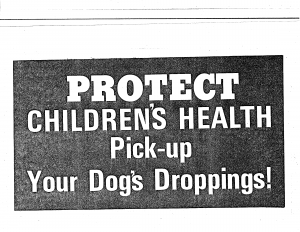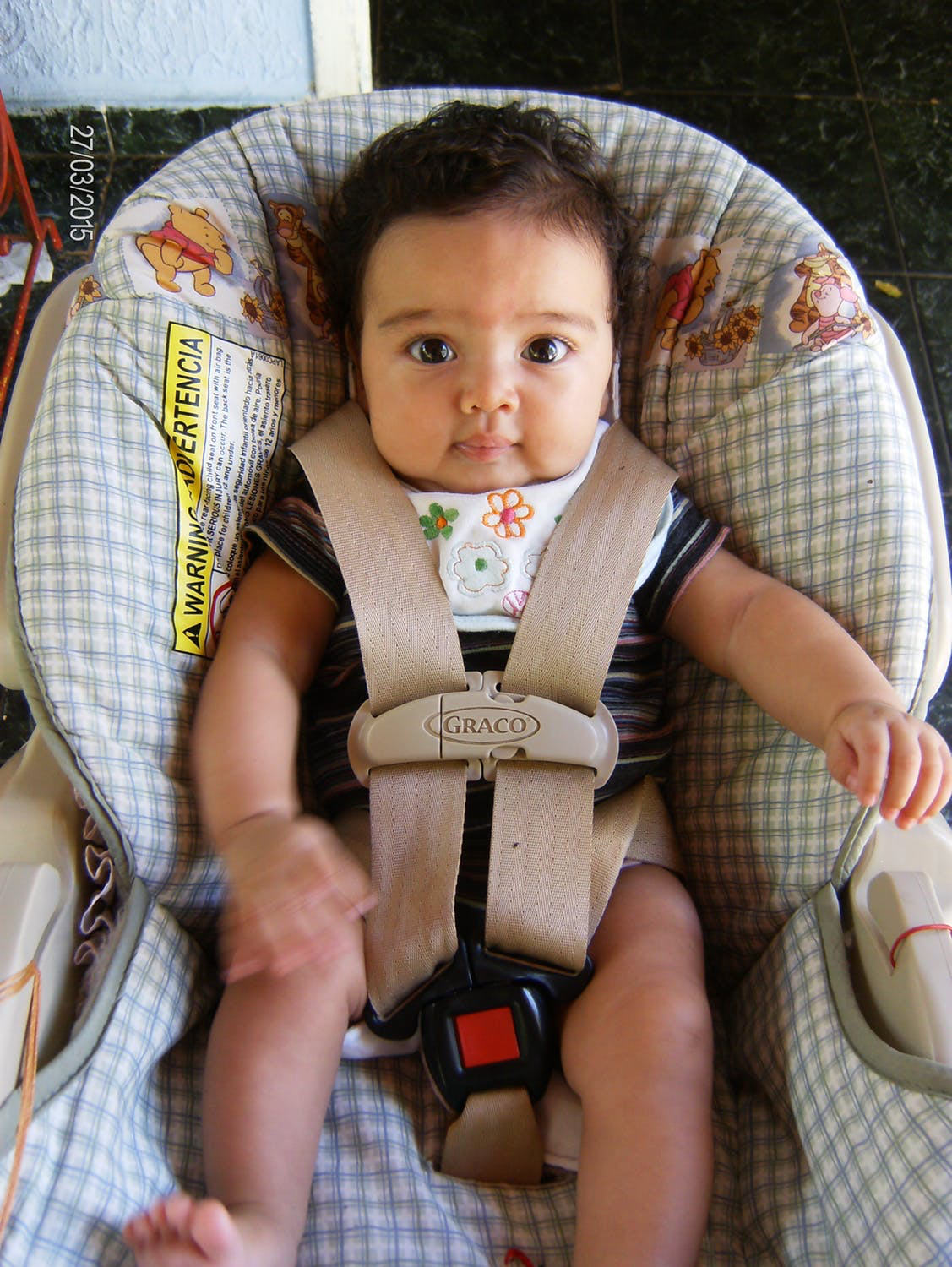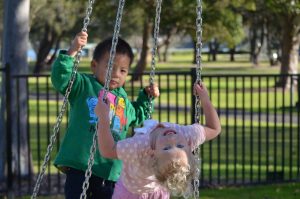16 Behavioral Community Approaches
Yolanda Suarez-Balcazar; Vincent T. Francisco; and Leonard A. Jason
Chapter Sixteen Objectives
By the end of this chapter, you will be able to:
- Explain how large, complicated problems can be broken down into smaller solvable ones
- Identify the importance of studying and bringing about change in observable behaviors
- Understand how behavioral approaches have been used in Community Psychology

You may have heard of B. F. Skinner, who pioneered the use of behavioral approaches to show how rewards and punishments can change the behaviors of animals and people. This behavioral revolution has had a tremendous effect on psychology in terms of how therapy is now practiced in countries throughout the world. The old Freudian perspective has been replaced by a variety of behavioral-type therapies, used to help patients with a wide variety of common problems such as anxiety and depressive disorders. Most behavioral studies have been conducted in hospitals in inpatient settings or other types of institutions, with much less behavioral research occurring in community settings such as homes or neighborhoods (Hanley et al., 2003). When behavioral-type work is conducted in community settings and has the values from the field of Community Psychology (as reviewed in Chapter 1, Jason et al., 2019), it has been referred to as Behavioral Community Psychology.

As we will see in this chapter, the Behavioral Community Psychology approach allows for a more focused and targeted method to define and change a range of community and social problems. In a sense, this approach breaks down large and complex problems into smaller ones that are much more manageable to solve. By specifying and measuring specific behaviors, such as littering or tobacco use, behavioral community psychologists can chart those behaviors over time to determine whether or not a particular intervention is effective. We will show in this chapter how these types of practical and easy-to-implement interventions can lead to what are called small wins, which can be reinforcing and sustain the work of community psychologists over time. We can change the world through being extremely strategic and focused by breaking down large problems into smaller ones that are solvable.
Ok, let’s give an example of a problem that seemed very difficult to solve. If you can believe it, this problem involved uncollected dog droppings in Chicago. There was a time when nobody knew how to even approach this problem, let alone study or solve it. But as you will see, by collecting data and showing that there was a possible solution, change did occur for not only Chicago but also other urban areas in the US. The behavioral community psychology Case Study 16.1 was carried out at a time when there were no formal laws that required dog owners to pick up after their dogs.
Case Study 16.1
Getting the Scoop on Behavioral Interventions

Leonard Jason invited his Alderman in Chicago to his community psychology class, and Jason said to himself that he would tackle whatever the Alderman mentioned as the most pressing community issue. When informed that it was uncollected dog feces, Jason’s mouth fell open in disbelief, but he pledged to work on this issue. Jason’s team first counted all fresh dog feces within an eight by five block area surrounding DePaul University. The fact that 1,147 droppings were within this area suggested that dog litter was a serious and prevalent problem within this community. Next, the team for five hours daily recorded the number of dogs, the number who defecated, and the number of dog defecations picked up by their owners. In addition, all defecations were picked up and weighed each morning. During the baseline phase, few dog owners were observed to pick up after their dogs and over 19 pounds of dog defecations were deposited in the target block. When dog owners were given instructions and a demonstration concerning how to use a plastic bag to pick-up dog feces, 82% of the dog owners proceeded to pick up after their dogs.
These findings indicated that the prompting intervention, which applied instructions and modeling, effectively motivated dog owners to dispose of their dogs’ waste properly.
At the study’s end, the Chicago alderman asked Jason to present the above data at City Hall in order to support a proposed ordinance which would require dog owners to have in their possession a pooper scooper when walking dogs. This ordinance was passed by the City Council, making Chicago one of the first cities in the country to pass a pooper scooper ordinance. The alderman to whom Jason had originally provided the data mentioned to him that this study, which received considerable media exposure, had helped change the politicians’ perception of the problem. The Alderman wrote to Jason: “In the past, this problem has often been scoffed at and not taken seriously. Your comments regarding the dog defecation problem altered that perception greatly.” Chicago’s ordinance became a model for other similar ordinances in towns around the country (Jason, 2013).
Although the subject matter of this study is a bit hard to believe, it is a true story. It shows the usefulness of listening to the community for ideas about what is important, even if it sometimes involves getting one’s hands dirty in the process. In other words, the subject matter of the intervention was decided upon by the needs of the community, and this is a critical part of behavioral community interventions. Also, by focusing on one small area and collecting data on dogs and their owners, it was possible to show that change could occur. In fact, it was found through the behavioral intervention that dog owners were willing to pick up after their dogs. Most importantly, the findings were transmitted to the legislative process, and a new ordinance came into law that made a real difference to the community. By getting into the trenches, getting our hands dirty, and being willing to study dog litter, we were able to influence dog owners to pick up. Just think what else is possible to accomplish.
HISTORICAL ROOTS

Some of the first developments of learning theory started in the 1890s when Ivan Pavlov demonstrated the importance of the environment on behavior. Pavlov wanted to measure the amount of salivation in dogs when they were given food, predicting that the dogs would begin to salivate in response to being fed. A researcher would bring food to the dogs whenever he walked into the lab. Pavlov noticed that after a while, the dogs began to salivate in response to hearing the researcher’s footsteps, meaning they began to associate the footsteps with being fed, which caused a behavioral response (e.g., salivation).
Pavlov (1897) examined this discovery further with a series of experiments, in which the dogs underwent numerous trials and were exposed to a sound that was immediately followed by food. Pavlov discovered that when he just made the sound that accompanied food, the dogs began to salivate even if the food was not presented. Through the systematic control of the environment (i.e., onset of a sound and delivery of food), the animals learned to associate the sound with the food that followed. This fundamental learning process is referred to as Classical Conditioning.


Later, B. F. Skinner further examined behavioral responses and developed Operant Conditioning through the use of small boxes that contained a lever that lab rats pressed to release food. In these experiments, a rat was placed in the box and then observed. At first, the rat scurried around and then accidentally pulled the lever that released the pellets of food. In successive trials, Skinner observed that the time in which it took the rat to release the pellets of food decreased each time it was placed in the box. The rat began to learn that pulling the lever resulted in the delivery of food. Skinner taught the rats to pull the lever by rewarding the behavior, which became the basis for Operant Conditioning. This theory builds upon the work of Pavlov in understanding the relationship between one’s environment and behavior. Skinner coined the term Behavioral Analysis (1953) to systematically demonstrate how the behavior of individuals and groups is influenced by the environment. His work led the way to understand how animal and human behavior changed through reinforcement and punishment.
These theories demonstrate the importance of the environment on shaping behavior. Environments have a powerful influence on individuals, and this work has provided insights for community psychologists as they try to understand larger and more complex ecological systems.
APPLIED BEHAVIOR ANALYSIS

Behavioral community psychologists often use the term Applied Behavior Analysis to understand and explain human behavior as a function of the interaction between behavior and the environment. Applied Behavior Analysis is rooted in Learning Theory, which focuses on objectively observable behaviors and how learning occurs when individuals respond to environmental factors or stimuli. Positive reinforcement and punishment can be used to teach and sustain behavior and shape individual as well as community behavior.
Another term that is often used in the behavioral literature is Behavior Modification, which refers to the systematic application of learning principles and techniques to assess and change an individual’s behavior (Martin & Pear, 2015). Often the terms Behavior Modification and Applied Behavior Analysis are used interchangeably within the field of Behavioral Community Psychology. Below are some terms used frequently in this field:
Positive Reinforcement leads to increases in the chances that a behavior will continue to occur. On the other hand, Punishment often leads to the reduction of the rate or likelihood of a behavior, which can result in the behavior being Extinguished.

Here is an example: Imagine that you see a person driving on the highway at a speed exceeding the local limit and the police give the person a speeding ticket. It is possible that this ticket (i.e., consequence) reduces the likelihood of future speeding behavior. So, the person’s behavior is changed by the consequences as they now drive at the speed limit.
Shaping of behavior involves establishing a complex set of behaviors using a set of steps. Teaching a child to cross a street involves teaching several behaviors connected in a certain order. This might look something like this: walk up to the corner, push the button to activate the crosswalk and traffic light, wait until you get the correct “walk” signal and the cars are stopped, and then quickly get across the street before the light changes.
Stimulus control highlights how characteristics of the environment might influence the occurrence of a behavior. To give an example of this principle, in Case Study 16.2 below, a group of Behavioral Community Psychology investigators examined the effects of altering traffic light pattern sequences on driver compliance at a busy, urban intersection in Chicago. In this case study, you will see that by making a small change to the traffic light pattern, car accidents were reduced.
Case Study 16.2
A Change in Lights: A Reduction in Car Accidents

This study began when a hazardous situation was observed with two sets of traffic lights that were separated by only about 100 feet. Drivers that were stopped at the first traffic light that was red, next saw this light turn green, and they began driving to the second traffic light which was in the process of turning from yellow to red. The drivers already had waited a long time for the first light to turn green, and were probably annoyed at facing another light that was going to delay them. As a consequence, more than half of the drivers sped right by the next light changing from yellow to red and this resulted in many accidents. Working with officials from the city of Chicago, the investigators then slightly altered light pattern sequences so that when the second set of traffic lights were approached, the lights were not changing from yellow to red. This small change resulted in almost all of the drivers not passing through a yellow or red light at the second traffic light. Following the completion of the study, the traffic engineer approved the permanent alteration of the light timing pattern that increased traffic rule compliance. Accident data collected before and after the light timing changes indicated a reduction in automobile accidents (Jason et al., 1985).
ADDITIONAL BEHAVIORAL CONTRIBUTIONS
Several additional important developments in the behavioral approach have occurred. For example, Albert Bandura (1986) discovered that behavior is also learned from the environment through the process of observation (see the video below for a brief history of Bandura’s Bobo Doll Experiment).
Bandura showed that it is possible to learn by just observing another person engaging in a particular behavior. So, a child might watch a parent use a fork to eat food, and then the child might engage in that behavior from just watching the parent engaging in the behavior. This work has helped scientists better understand how aggressive behavior can be learned by youth, and this can occur when youth observe violence being reinforced. In addition, Bandura helped us better understand the importance of the thoughts and feelings that intervene between the stimuli and responses. In a sense, we are active information processors, and therefore cognitive factors are also involved in learning.

A final development that has attracted considerable media attention is the emergence of the field of behavioral economics, which is derived from the fields of psychology and economics. In essence, we are susceptible to temptations and often make bad decisions even though there are better options. For example, it is not uncommon to eat high fat and high-calorie snacks rather than healthier foods, which has resulted in an obesity crisis in the US. Reed, Niileksela, and Kaplan (2013) suggest that this apparent irrationality can still be understood based on the principles of operant learning. Some risk-taking behaviors, such as unhealthy food choices, have more reinforcing value than less risk-taking behaviors such as healthy food choices. Often high fat and high-calorie foods are appealing and tasty, which reinforces continuing to eat them. Therefore, it is possible to understand responses such as these types of food choices (even though these foods can lead to obesity and other health complications) by the fact that these behaviors are being reinforced.
CONTRIBUTIONS OF BEHAVIORAL COMMUNITY PSYCHOLOGY

Most applications of Applied Behavior Analysis and Behavior Modification have been within the medical model, such as working one on one with patients having severe developmental disabilities. However, Behavioral Community Psychology interventions have addressed issues such as littering (Clark et al., 1972); recycling (Zulas, 2009); illegal sales of cigarettes to minors (Jason et al., 1991); drug addiction (Silverman et al., 2008); bullying in schools (Embry, 2002); blood donations (Ferrari & Jason, 1990); and identifying and conducting behavioral analyses on concerns of community members (Arellano et al., 2016; Balcazar et al., 2009; Suarez-Balcazar & Balcazar, 2016). Many of these interventions have embraced Community Psychology values summarized by Fawcett (1991), and include:
1) Valuing collaborative relationships
2) Focusing on behavior-environment relationships of importance to communities
3) Conducting research focusing on modifiable and sustainable environmental events
4) Involving setting and research measures relevant to community concerns
5) Using measurement systems that capture the dynamic relationship between behavior and environment
6) Developing interventions owned by the community and sustainable with local resources
7) Providing interventions focused on maximizing impact and benefits to the community
8) Spreading effective interventions
9) Communicating effectively to the community stakeholders
10) Contributing to fundamental change.
These values have guided the work of behavioral community psychologists (Glenwick & Jason, 1980).
Below are case studies that provide several examples of Behavioral Community Psychology interventions. Case Study 16.3 shows how behavioral community psychologists collaborated with community-based organizations to influence legislative officials to support laws that contributed to second-order change, in this case protecting the safety of infants and children. Before child car restraints became law, thousands of children in the US were either injured or killed in car accidents. In fact, the leading cause of death for children under one year of age was car accidents due to not being protected in infant seats.
Case Study 16.3
A Behavioral Community Psychology Approach: Changing Laws and Saving Lives

A national coalition of behavioral community psychologists, that included Leonard Jason and Stephen Fawcett, was trying to influence legislators to pass legislation that would require infants and children to wear a seatbelt or to be placed in an appropriate car or infant seat while in cars. In Illinois, Jason and his colleagues worked with a community-based organization that was trying to pass needed child restraint legislation. Their hunch was that data gathered on behavioral and self-report information could be used to influence the debate about passing needed legislation. For months, they looked inside cars to see whether or not infants and children were placed in car restraints. They also used telephone surveys to collect information about the public’s attitude toward the child-restraint bill. The goal was to use both data collection on attitudes and firsthand observations to build a more convincing case when trying to influence policy officials. Although they were also working closely with an Illinois organization that was advocating for the passage of this bill, they were unsure if the data would persuade legislators. They sent the collected information to a randomly selected half of the Illinois state legislators prior to a vote on the child passenger restraint bill. In that letter, the senators were informed that 140 children in Illinois were killed and 25,828 injured in automobile accidents over the last six years in Illinois. The authors also pointed out that, through their observations, 93% of Illinois children were not placed in adequate restraints while riding in cars. They also provided the legislators with the results of the survey, in which 78% of adults supported the child passenger restraint bill. By sending this critical information to half of the legislators, they were able to see whether the targeted letter had made a difference in encouraging support for this important legislation. Significantly more senators (79%) who received the information voted for passage of the bill, whereas only 53% of senators who did not receive the letter voted for the bill. Their intervention was a success, and even the governor requested a copy of the findings before finally signing the legislation. With the passage of the legislation, for children between the ages of one to four, the use of appropriate car restraints increased from 13% to 42%. Rates of appropriate restraints increased from 49% to 74% for infants less than one year of age. Most importantly, children’s deaths caused by traffic accidents decreased by 53%. Comments made by members of the Illinois Child Passenger Safety Association included: “The data were very, very interesting. It was a building block in the passage of the bill.” “Those who had the data and understood them, it made them more forceful and vocal in support of the bill” (Jason & Rose, 1984).
For many social and community problems, working at the policy level can have more substantial and enduring results, as the car restraint case study illustrated. Psychologists often provide therapy to those who are injured in car accidents, but there are clear advantages to using our more preventive behavioral community psychology strategies to change laws that influence parents to appropriately protect their children while being driven in cars.
The next case study illustrates how the community researchers used principles of Applied Behavior Analysis to study a concrete behavior—compliance with traffic signs by drivers—and developed operational definitions of terms to observe the behavior in a community context. The authors worked with community residents to identify an issue of concern to them and their children with disabilities: traffic safety. As you will see, specific roles for the investigators included developing a strong reciprocal partnership with the community, identifying issues the community cared about, helping design a coding system to observe the behavior in context, and developing action steps to address the issue in collaboration with the community. The community in this example refers to Latino parents of youth and young adults with disabilities.
Case Study 16.4
Familias Saludables (Healthy Families)

Yolanda Suarez-Balcazar and her team, in collaboration with residents of a predominantly Latino neighborhood and staff from a local community agency, initially designed a healthy lifestyles program called Healthy Families (Familias Saludables) to address a concern identified by the community about a lack of culturally relevant healthy lifestyles programming for their families with developmental disabilities (Suarez-Balcazar et al., 2016; Suarez-Balcazar et al., 2018). Eight evidence-based sessions were then provided that focused on enhancing healthy routines at home and in the community, and addressed neighborhood issues that families cared about. During these sessions, many mothers reported cars in their neighborhood driving over the speed limit or failing to stop for crosswalks, leading them to worry for their children’s safety and their own. Furthermore, one of her collaborators (The Consortium to Lower Obesity in Chicago Children, n.d.) was at the time sponsoring a city-wide effort to collect walkability data across Chicago’s diverse neighborhoods and address walkability safety concerns. The lack of pedestrian traffic safety in program participants’ neighborhoods further made worse the numerous environmental barriers that youth and young adults with Intellectual and Developmental Disabilities already faced to participating in their communities (e.g., over-stimulating sensory features, challenging physical layout). Utilizing Applied Behavior Analysis, the team designed a study in collaboration with their community partners to examine the behavior of traffic patterns in this neighborhood.
To assess the neighborhood’s walkability, data on traffic safety were collected based on direct observations. Independent researchers stood on street corners throughout the target area to observe and record traffic patterns including the number of cars failing to stop for the crosswalk, the smoothness of sidewalks, the speed of cars, and general street conditions. Data were collected at 25 intersections and focused on the behavior of car drivers on selected neighborhood streets, previously identified by community residents and agency staff as places/streets frequented by local families due to proximity to parks, schools, places of worship, and stores. Behaviors of interest that were recorded included drivers complying with street signs, drivers engaging in a complete stop whereby the car is not moving for a minimum of five seconds, and cars yielding to pedestrians.
They found that only one out of every three cars stopped at stop signs, and only half stopped before the crosswalk to allow pedestrians to pass. A pedestrian survey regarding walkability safety and engagement in the community found that participants walked to about six to nine places within the neighborhood weekly. Survey respondents also shared concerns about traffic safety. Consistent with a Behavioral Community Psychology approach, the data were utilized by the research team, the community residents, and staff from the local partner organization. As a result, over fifteen families participated in a community health walk to raise awareness of safe driving practices. The health walk was organized by a number of organizations and participating families who decided to use this walk as an opportunity to educate the community about walkability safety. Parents and children created signs in both English and Spanish with self-selected messages such as, “Do not text and drive” and “Maneja con cuidado” [drive carefully] to carry during the walk. Then together, the team and the families joined the health walk alongside other community residents to continue promoting pedestrian safety in their areas.
This case study nicely illustrates the core values of Behavioral Community Psychology. First, the target population was actively involved in all aspects of the intervention, including identifying the concerns and taking action. Second, increased fostering of the target population’s sense of personal control and empowerment was accomplished by families designing the signs to carry during the health walk and identifying the streets to be observed. Third, there was the use of objective and subjective assessments when evaluating outcomes, using an instrument developed by a local traffic safety expert group. Fourth, they saw an increased emphasis on antecedent events, and in this case, an important antecedent was the traffic signs posted at street corners indicating to drivers that the desired behavior is for them to stop. Finally, increased interdisciplinary collaboration occurred, as this project included a team of community psychologists, several graduate students from occupational therapy and nutrition, and one faculty member from public health.
Some might think that focusing on dog litter or traffic safety is just not important, given the other types of serious problems that we face. But behavioral community psychologists have tackled even larger issues, as the next case study demonstrates.
Case Study 16.5
The I-Files: A Community Movement for the Big Island

The project began during the first day of a two-day behavioral training workshop in Honolulu in the spring of 1997. The workshop was on the development of community coalitions for health improvement and was delivered at the request of the Chronic Disease Branch Chief of the State of Hawai’i Department of Public Health. In attendance were many employees of the health departments from Honolulu and several of the neighboring islands. Also present were health educators, public health nurses, epidemiologists, branch chiefs from several divisions, and the Directors of District Health Offices from Kauai and Hilo. By noon on the first day, one table was absolutely buzzing with excitement. At the table were six public health nurses, three health educators, and the district health officer. On the back of a napkin, they sketched an idea for a community health improvement initiative that would later be named I-Files. The idea was simple—for each of the six districts on the Big Island, they would develop teams of three people including someone specializing in community mobilization and action planning, another person specializing in grant writing, and another person who would be trained in behavioral evaluation. They would develop community partnerships to address the most pressing health issues in each district, and mobilize the people and financial resources needed to resolve the issues.
Many of the behavioral programs and efforts that began in 1997 continue to this day. Some of the major behavioral accomplishments include: the development of a drug and alcohol-free surf competition for area teens; a community leadership development program where the fire department trained teens in firefighting, community service, and leadership skills; a community coalition comprised of businesses, professional fishermen, and community members in Kona to minimize destructive fishing practices near the area’s reefs. Further accomplishments were a community coalition to support the continued success of the Ka’u Hospital to promote community health improvement and build the capacity of residents to prevent health outcomes such as diabetes, the development of a neighborhood watch and diabetes self-management program by public health nurses, and a community policing program. To learn more about these outcomes, see the Prezi presentation.
In this case study, community members and employees of the District Health Offices were involved in a project that led to breakthrough approaches in community health improvement. By empowering the community health workers to respond to what they were learning from community members, more responsive programming was developed to meet real-world needs as they emerged in communities. By creating coalitions that represented multiple sectors in communities, programs and policies were developed that affected behavioral changes to reach more people, resulting in improvements in a variety of valued life outcomes. The new and modified programs, policies, and practices developed by and with community members represented a variety of behavior change strategies. By involving both the community members and the public health workforce, programs and policies were more relevant and had a long term positive influence. As this case example indicates, Behavioral Community Psychology investigators can make a difference using their innovative methods with a wide variety of community issues.
OTHER ISSUES TO CONSIDER
Clearly, the behavior of individuals and groups takes place in complex environments across a variety of settings including families, homes, schools, neighborhoods, community agencies, places of worship, and work settings. These behaviors can be complex as they are in constant interaction with and impacted by the environment (Kelly, 1968).
Behavioral community interventions do not operate in a vacuum but rather compete with other competing messages, which can affect and influence the effectiveness of the interventions. As mentioned in Chapter 1, for many years smoking prevention interventions were implemented in schools, and yet children reported that they were almost always sold cigarettes by store vendors. The fact that youth were sold these dangerous substances did have a negative effect on school smoking prevention programs, for there were youth who wondered how dangerous cigarettes could be if they were sold cigarettes by adults. Therefore, additional behavioral interventions were needed to reduce youth access to retail sources of tobacco. As another example, commercials on the media constantly advertise the benefits of food that have high levels of sugar and fat, and these media influences will also need to be addressed by those working on childhood obesity behavioral programs.

Some feel there are no generalizable laws of behavior that can be used to understand something as complex as a community, which has complicated layers of ecological influences operating at the individual, group, organizational, and societal levels. In other words, an intervention that might work in one setting might not be effective in a different place, so they feel that behaviorists who believe in universal laws of behavior are overly simplistic. We have an answer to this concern. We believe that the principles of learning reviewed in this chapter are operating in community settings, but there might be important differences in how they are implemented in different settings (Jason et al., 2016). As an example, a behavioral school-based program that has been shown to work well in environments that have adequate staff and resources might have very different outcomes when located in an environment where there are inadequate resources and other multiple problems due to gangs and violence. What is important to remember is that an excellent intervention in one setting might not work well when it is implemented in another that is less supportive and reinforcing. Also, an intervention for one age group might not work for another age group, as indicated below in Case Study 16.6.
Case Study 16.6
Prevention of Prejudice

Behavioral Community psychologists attempted to impact inter-ethnic relations of elementary school age children by implementing a peer tutoring program. These youth were shown how to tutor their classmates. Direct observations of social interactions on the playground and sociometric indices of interpersonal ratings were used to measure inter-ethnic associations before and after the eight-week program. For first-graders, inter-ethnic interactions and sociometric choices increased and improvements were found in arithmetic and reading grades. However, no significant changes were found among the third-grade program children. The first-grade children carried the benefits of the peer tutoring program from the classroom to the playground. First-grade youngsters quickly developed cohesive, interdependent groups and some continued to use their group name from the study on the playground eight months following the program’s end. The findings suggest the importance of fostering cooperation and addressing prejudice early on, as indicated by the lack of significant changes for third-graders in their ratings of fellow children of different ethnic backgrounds. These findings further suggest that a behavioral cooperative peer tutoring classroom structure may improve the inter-ethnic relationships of first-grade children, who have experienced only a short history of competitive academic exercises and whose overt ethnic prejudice may be less ingrained (Rooney-Rebeck & Jason, 1986).
It is by attending to the unique history, age, and resources available in these school settings that we might be better able to understand these types of different outcomes. Basic behavioral principles are operating throughout these settings, and our task is to better identify and understand these complex environmental factors.
Some have also been concerned about the language and terms used by behavioral psychologists, who often used words such as “controlling behavior” (Mattaini et al., 2016). While dictators of certain countries are “controlling” of their citizens, it is understandable that some might be concerned with the terms sometimes used by behaviorists. But these phrases do not capture the rich collaborations that occur in behavioral community interventions, when researchers work closely with community members in both defining the goals of interventions and actively participating in bringing about changes (Glenwick & Jason, 1980). As shown by the case studies above, behavioral community psychologists are able to gain “control” of key aspects of the environment, but it is through a collaborative, mutually agreed upon process with key members of the community (Bogat & Jason, 2000).
Behavioral Health Changes and COVID-19
The Coronavirus pandemic has been an unprecedented event requiring a wide-spread change in behavioral and social norms. There are many roles for Community Psychologists such as encouraging communities on getting vaccinated, wearing face masks, and social distancing. The intention is for these solutions to be easily sustained by community members. For example, by using modeling and building trust with communities, Community Psychologists could achieve the implementation of widespread behavior changes.
The leaders of Australia uniting as one team guided by health experts successfully modeled cooperative and prosocial health behaviors. With a reported 27,912 cases and 908 deaths as of December 1st, 2020, the country’s COVID-19 response offers valuable insights into managing the pandemic (Child, 2020). A major theme that emerged from conversations with those who shaped Australia’s action and policy decisions was that of building trust with citizens and modeling wearing a mask and social distance. Most Australian’s adhered to quarantining, rapid testing, and wearing a mask. Notably, this cooperation was fostered by a display of collaboration among Australian politicians and the federal government. These decision-makers worked intentionally to show unity when discussing pertinent COVID-19 information, emphasizing the idea of one truth. This behavior modeled to Australian citizens that their part in the pandemic was greater than individual interests and instead prioritizes protecting the country as a whole.
SUMMING UP

In this chapter, the principles of Applied Behavior Analysis were utilized in the Behavioral Community Psychology case studies to illustrate how to promote real community change in a variety of settings. Behavioral community psychologists focus on the complex relationship between individual/group behavior and the environment. By attending to the relationship between behavior and the environment, whereby each impacts the other, it is possible to bring about important change.
As we end this chapter on Behavioral Community Psychology, it is useful to point out that many of our social and community problems, such as substance abuse, school failure, and juvenile delinquency, share many developmental roots such as poverty and lack of resources. Coordinating our behavioral community interventions so that they uncover common environmental causes, and take them into consideration as we implement change, will ultimately increase the enduring impact of this work.
Critical Thought Questions
- Discuss what you think are some of the benefits and limitations of using Applied Behavior Analysis principles to study problems of interest to Community Psychology.
- Many community psychologists do research in schools. What do you think about the practice of some school teachers across the country using different types of tangible positive reinforcers (e.g., stickers, candy) to promote compliance and “good classroom behavior?” Justify your response.
- Imagine that you are living in a tenant building with an active renters’ association and you were elected president of the association for a one-year term. You noticed a problem with residents’ lack of awareness about the need to recycle. Although the recycling bins are provided and street collection is scheduled once per week, hardly anyone is taking the recycling bins out. Most tenants are young college students who are likely to produce recycling items (cans, paper, plastic). You want to start a recycling campaign and assess its effectiveness. Based on the principles learned in this chapter, identify components of the campaign and how you would get residents to recycle. Identify how you would assess if the campaign is effective. What would you measure as the unit of behavior for which you can take baseline measures?
Take the Chapter 16 Quiz
View the Chapter 16 Lecture Slides
____________________________________________________________________
REFERENCES
Arellano, R., Balcazar, F. E., Alvarado, F., & Suarez, S. (2016). A participatory action research and intervention in a rural community of Mexico concerns report method/Titulo en Español. Universitas Psychologica, 15(2), 15.
Balcazar, F., Garcia-Iriarte, E., & Suarez-Balcazar, Y. (2009). Participatory action research with Colombian immigrants. Hispanic Journal of Behavioral Sciences, 31(1), 112-127.
Bandura, A. (1986). Social foundations of thought and action: A social cognitive theory. Prentice-Hall, Inc.
Bogat, G. A., & Jason, L. A. (2000). Toward an integration of behaviorism and community psychology. In J. Rappaport & E. Seidman (Eds.), Handbook of Community Psychology, (pp. 101-114). Kluwer Academic/Plenum Publishers.
Child, J., Dillon, R., Erasmus, E., & Johnson, J. (2020, December 15). Collaboration in crisis: Reflecting on Australia’s COVID-19 response. Retrieved December 17, 2020, from https://www.mckinsey.com/industries/public-and-social-sector/our-insights/collaboration-in-crisis-reflecting-on-australias-covid-19-response
Clark, R. N., Burgess, R. L., & Hendee, J. C. (1972). The development of anti-litter behavior in a forest campground. Journal of Applied Behavior Analysis, 5(1), 1-5.
Consortium to Lower Obesity in Chicago Children [CLOCC]. (n.d.). Neighborhood walkability initiative. http://www.clocc.net/our-focus-areas/physical-activity-and-built-environment/neighborhood-walkability-initiative/
Embry, D. D. (2002). The good behavior game: A best practice candidate as a universal behavioral vaccine. Clinical Child and Family Psychology Review, 5(4), 273-297.
Fawcett, S. (1991). Some values guiding community research and action. Journal of Applied Behavior Analysis, 24(4), 621-636.
Ferrari, J., & Jason, L. A. (1990). Incentives in blood-donor recruitment – response. Evaluation & the Health Professions,13(3), 374-377.
Glenwick, D., & Jason, L. A. (1980). Behavioral community psychology: Progress and prospects. Praeger.
Hanley, G., Iwata, B., & McCord, B. (2003). Functional analysis of problem behavior: A review. Journal of Applied Behavior Analysis, 36(2), 147–185.
Jason, L. A. (2013). Principles of social change. Oxford University Press.
Jason, L. A., Glantsman, O., O’Brien, J. F., & Ramian, K. N. (2019). Introduction to the field of Community Psychology. In L. A. Jason, O. Glantsman, J. F. O’Brien, & K. N. Ramian (Eds.), Introduction to Community Psychology: Becoming an agent of change. https://press.rebus.community/introductiontocommunitypsychology/chapter/intro-to-community-psychology/
Jason, L. A., Ji, P., Anes, M., & Birkhead, S. H. (1991). Active enforcement of cigarette control laws in the prevention of cigarette sales to minors. The Journal of the American Medical Association, 266(22), 3159-61.
Jason, L. A., Neal, A. M., & Marinakis, G. (1985). Altering contingencies to facilitate compliance with traffic light systems. Journal of Applied Behavior Analysis, 18, 95-100.
Jason, L. A., & Rose, T. (1984). Influencing the passage of child passenger restraint legislation. American Journal of Community Psychology, 12, 485-495.
Jason, L. A., Stevens, E., Ram, D., Miller, S. A., Beasley, C. R., & Gleason, K. (2016). Theories in the field of community psychology. Global Journal of Community Psychology Practice, 7(2), 1-27. https://www.gjcpp.org/en/article.php?issue=22&article=125
Kelly, J.G. (1968). Towards an ecological conception of preventive interventions. In J.W. Carter (Ed.) Research contributions from psychology to community mental health. (pp. 76-97). Behavioral Publications.
Martin, G., & Pear, J. (2015). Behavior modification: What it is and how to do it (10th ed.). Routledge.
Mattaini, M. A., Jason, L. A., & Glenwick, D. S. (2016). Behavioral and time-series approaches. In L. A. Jason & D. S. Glenwick (Eds.), Handbook of methodological approaches to community-based research: Qualitative, quantitative, and mixed methods. (pp. 177-186). Oxford University Press.
Pavlov, I. P. (1897). The work of the digestive glands. Griffin.
Reed, D. D., Niileksela, C. R., & Kaplan, B. A. (2013). Behavioral economics: a tutorial for behavior analysts in practice. Behavior Analysis in Practice, 6(1), 34–54.
Rooney-Rebeck, P., & Jason, L. A. (1986). Prevention of prejudice in elementary school students. The Journal of Primary Prevention, 7(2), 63-73.
Silverman, K., Roll, J. M., & Higgins, S. T. (2008). Introduction to the special issue on the behavior analysis and treatment of drug addiction. Journal of Applied Behavior Analysis, 41(4), 471-480.
Skinner, B. F. (1953). Science and human behavior. The Macmillan Company.
Suarez-Balcazar, Y., & Balcazar, F. (2016). Functional analysis of community concerns in participatory action research. In L. A. Jason & D. Glenwick (Eds.), Handbook of methodological approaches to community-based research, (pp. 315-324). Oxford University Press.
Suarez-Balcazar, Y., Hoisington, M., Orozco, A. A., Arias, D., Garcia, C., Smith, K., & Bonner, B. (2016). Benefits of a culturally tailored health promotion program for Latino youth with disabilities and their families. American Journal of Occupational Therapy, 70, 7005180080.
Suarez-Balcazar, Y., Early, A., Maldonado, A., Arias, D., Garcia, C., Zeidman, A., & Agudelo-Orozco, A. (2018). Community-based participatory research to promote healthy lifestyles among Latino immigrant families with youth with disabilities. Scandinavian Journal of Occupational Therapy, 25(5):396-406. doi: 10.1080/11038128.2018.
Zulas, A. L. (2009). Environmental change: The application of three theories of behavior change on recycling behavior and ecological values. Retrieved from ProQuest Dissertations and Theses. (ID: 1954848701).
Acknowledgments: We wish to thank Jamie Archibong for helping to write the section on Behavioral Health Changes and COVID-19.

An American psychologist known for his influential work in behavioral psychology.
The application of the principles of behavioral science to applied problems in community settings.
Progress that occurs when breaking down a goal into manageable parts.
Refers to a procedure of learning in which a stimulus (e.g., food) is paired with a previously neutral stimulus (e.g., a bell) to shape behavior.
A method of learning where an individual makes an association between a specific behavior and a consequence.
A science of behavior focusing on the relationship between behavior and its consequences, resulting in a greater understanding of the principles of behavior that are observable and replicable.
The application of principles of behavioral science to applied problems.
A method of learning that occurs when individuals respond to environmental factors or stimuli.
A technique used to change the frequency or duration of a behavior.
When something rewarding happens after the onset of a behavior.
A consequence associated with a behavior or group of behaviors that decreases the rate or likelihood of the behavior in the future.
Decreasing undesirable behaviors by stopping the delivery of reinforcers that follow the behavior.
A complex set of procedures that results in a change in topography, or the sequence, of behaviors.
The process in which the rules (antecedents) in an environment become associated with consequences, and then make a behavior or group of behaviors more or less likely to happen in the future.
In psychology, the medical model involves a therapist delivering one-on-one psychotherapy to patients. In medicine, it involves physicians providing treatments for one patient at a time.
Those who have something to gain or lose from a study.
Involves initiating more structural, long term, and sustainable transformational changes.
A group of individuals that share a characteristic which is the focus of scientific research.
The process of gaining power emerging at the individual, organizational, community, and societal levels, which are affected by peoples' previous experiences, skills, actions, and context.
Anything preceding a behavior that signals the likelihood of a consequence if the behavior is performed.
Scientists from multiple disciplines work together to try to understand complex social and community problems.
A set of organizations, institutions and community agents that cooperate to improve the living conditions of the community.
Achievement of the results intended by the intervention (it is an indicator that the intervention works properly).

